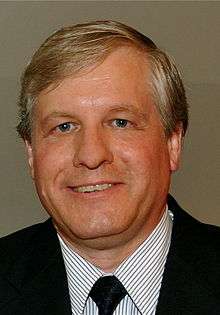Scott D. Emr
| Scott D. Emr | |
|---|---|
 | |
| Born | February 8, 1954 |
| Institutions | |
| Alma mater | |
Scott D. Emr (born February 8, 1954) is a cell biologist and molecular geneticist who is serving as the Frank H.T. Rhodes Class of '56 Director of the Weill Institute for Cell and Molecular Biology at Cornell University. He is also a Professor of Molecular Biology and Genetics in the College of Arts and Sciences at Cornell, an Adjunct Professor of Molecular Medicine in the College of Veterinary Medicine at Cornell, and a Professor of Biochemistry at the Weill Cornell Medical College.
Dr. Emr was named as the first director of the Weill Institute in April 2007. Having received his Ph.D. in molecular genetics in 1981 from Harvard University working with Thomas Silhavy and Jonathan Beckwith, he completed his postdoctoral research with Randy Schekman at the University of California, Berkeley (Miller Research Scholar, 1981-1983). Emr has since held faculty positions at the California Institute of Technology (assistant and associate professor, 1983-1991), and the University of California, San Diego School of Medicine (distinguished professor and investigator in the Howard Hughes Medical Institute 1991-2007).
Emr is an elected member of the American Academy of Arts and Sciences, the National Academy of Sciences, and the European Molecular Biology Organization. He serves on the National Advisory Committee and review panel of the Pew Scholars Program in the Biomedical Sciences. He also serves on the editorial boards of several scientific journals, including the Journal of Molecular and Cellular Biology, the Journal of Cell Biology, Trends in Cell Biology, and Lipid Signaling.[1]
Emr's research focuses on the regulation of cell signaling and membrane trafficking pathways. His lab is characterizing the role of phosphoinositide lipids, vesicle-mediated transport reactions, and ubiquitin in the down-regulation of activated cell surface receptors. The Emr lab recently identified the ESCRT complexes, which are the first components of a molecular machine required for receptor down-regulation at the endosome (multivesicular body), a late step in cytokinesis, and for the budding and release of HIV.
Notes
- ↑ "Meet the Faculty" (Press release). Weill Institute for Cell and Molecular Biology. 2009-03-01. Retrieved 2009-04-21.
References
- "Scott Emr Faculty Profile". Cornell Department of Molecular Biology & Genetics. Retrieved 2009-04-21.